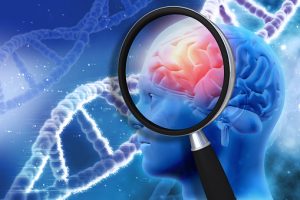 Microvascular ischemic disease sounds ominous, and it can be. Understanding the causes, symptoms, and treatment options is important since it is one of the major causes of death worldwide.
Microvascular ischemic disease sounds ominous, and it can be. Understanding the causes, symptoms, and treatment options is important since it is one of the major causes of death worldwide.
Microvascular ischemic disease is also known as small vessel disease. It’s the narrowing of the blood vessel leading to reduced supply of blood to brain tissue. Microvascular ischemic disease is often detected on an MRI of the brain. It shows up as tiny blood vessels in the brain that are blocked. They often appear to have ruptured or filled with clots. When this happens, the part of the brain tissue around the blood vessel can die off.
Microvascular ischemic disease causes and symptoms
Advertisement
Microvascular ischemic brain disease is more common in those who suffer from conditions such as hypertension, high cholesterol, and diabetes. It can also be a sign that you have blood vessel disease near your heart. Sometimes, blood vessel narrowing can occur when a person is under a great deal of emotional stress or taking part in physical activity. Smoking and age are also considered risk factors that lead to the disease.
There are several microvascular ischemic disease symptoms. The list below covers most of them.
- Memory issues
- Loss of logic (Difficulty organizing or multi-tasking)
- Depression
- Personality changes
- Laughing or crying at inappropriate times
- Slow movements (Rigid muscles and trouble walking)
- Frequent falling
- Weakness on one side
- Speech problems
- Difficulty swallowing
- Blurred or double vision
- Inability to feel sensory stimuli
- Irritable or angry
Some people may not experience any symptoms if they are generally healthy to begin with. However, those who have other chronic health issues have reported symptoms including brain fog, trouble thinking or remembering, changes in personality, blurred vision, and uncoordinated motor movements.
Diagnosing microvascular ischemic disease
Microvascular ischemic disease can go undiagnosed when people don’t have any symptoms. The disease is often revealed when a person undergoes a scan or other examination. A normal MRI has a homogenous appearance. The brain color and structure are essentially normal. If someone has bright white spots, this could be a sign of narrowed vessels, calcification, or blockages. Multiple white spots that appear very brightly in the brain are likely signs of microvascular ischemic disease.
When a patient in this position is given an infusion of contrast called gadolinium, the spots will appear even brighter on the MRI. In addition to scans, doctors will conduct a mental exam to look for behavioral changes and memory loss.
Complications of microvascular ischemic disease
Sadly, there can be complications associated with the disease.
- Dementia—This can occur if the ischemic field of tissue seizes the part of the brain controlling memory. These changes are also thought to cause Alzheimer’s disease.
- Heart attack—Clots can form in the small blood vessels around the heart, leading to heart muscle damage.
- Kidney failure—When there is a high level of sugar, small vessels in the kidneys get damaged, which can lead to kidney failure.
- Stroke—If clots get large, a stroke can cause widespread ischemia in the brain.
Treating microvascular ischemic disease
When a person experiences a mild case, treatment focuses on lifestyle adjustments that should improve overall health. These individuals may have to change their diet, start an exercise program, and eliminate unhealthy habits like smoking or excessive drinking.
Since the disease is often the result of another condition, most doctors will want to concentrate on getting the underlying problem under control. The idea is to prevent more damage from happening.
Here’s a look at some of the treatments that are considered:
- Blood pressure medications
- Dietary management such as low sodium, fat, and sugar
- Cholesterol medications
- Blood sugar control
- Low-dose aspirin
- Physical therapy
Advertisement
There is no cure, however, so many people who suffer from the disease should be monitored on a regular basis.
Mild cases of microvascular ischemic disease without an underlying condition may be nothing to worry about, but more severe cases require careful attention. It is important to be up-front with your doctor when it comes to all of your symptoms and your lifestyle. If you notice any of the aforementioned symptoms, speak to your doctor as soon as possible.
Related: Walking increases blood circulation to the brain
